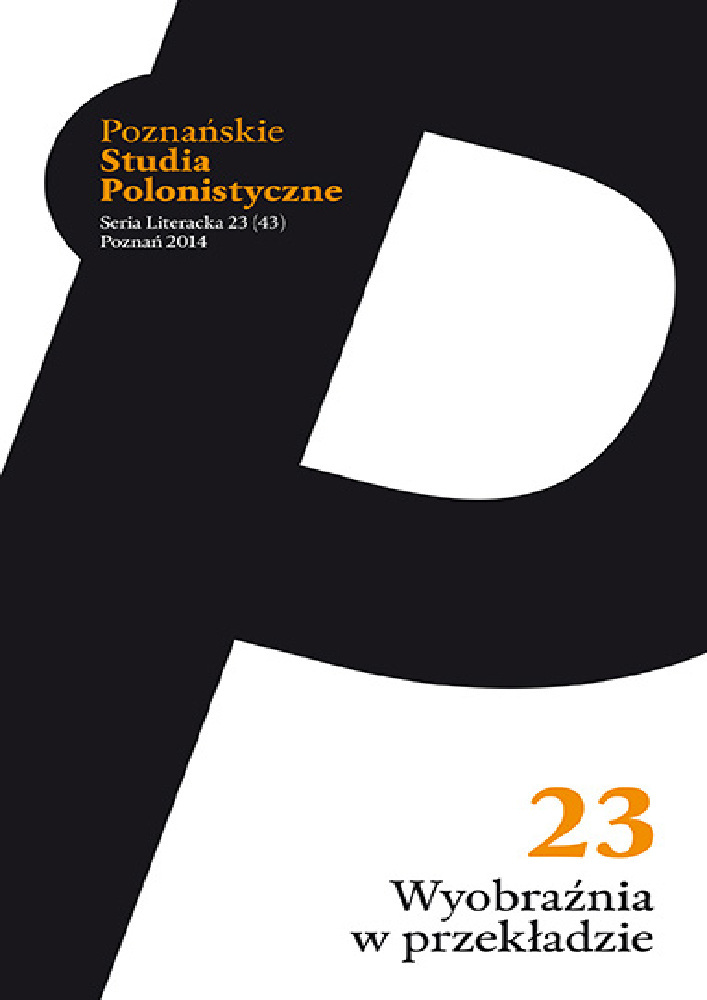Abstrakt
The article comments on the ninth Polish translation of Lewis Carroll’s Alice in Wonderland, by Elżbieta Tabakowska. As the key to the analysis of this translation, the present author has chosen the relations between the text and image, especially the illustrations by sir John Tenniel and Tove Jansson. As opposed to previous translators or Alice in Wonderland, Tabakowska’s attempts to modernise the book to make it more accessible for 20th-century readers, and more compatible with 20th-century illustrations. In the edition discussed here, it is actually possible to discern two translations, translation proper and and an intersemiotic one, because illustrations by the author of Moomin books introduce connotations which would be totally alien to 19th-century girls. Through analysis of specific translation choices, the article underlines the strengths of the newest translation, such as its competent Polish, the wealth of Polish contexts, the educational role of exoticisation, and the retained principle of double reception. The article, however, also points out to certain weaknesses of the translation. Anna Rogulska also notices that, because the represented world is deeply rooted in the culture of Victorian England, the text cannot by fully rendered in the 21st century. Another interpretative key for the reading of the newest Polish edition of Carroll’s book is cognitive linguistics, which is the academic specialisation of the translator. The article demonstrates that the function of the new translation was not only a contribution to the long series of Polish renditions of Alice in Wonderland, but also a practical application of cognitive science in literature, which makes the translation valuable not only for children’s literature, but also for scientific inquiry.Bibliografia
Rajewska E., Dwie wiktoriańskie chwile w Troi, trzy strategie translatorskie, Poznań 2004.
Tabakowska E., Językoznawstwo kognitywne a poetyka przekładu, tłum. A. Pokojska, Kraków 2001.
Tabakowska E., Profilowanie w języku i w tekście – perspektywa językoznawcy, tłumacza i poety, w: Profilowanie w języku i w tekście, red. J. Bartmiński, R. Tokarczuk, Lublin 1998.
Tabakowska E., Słowo-po-słowie od tłumacza, w: L. Carroll, Alicja w Krainie Czarów, tłum. E. Tabakowska, Kraków 2012.
Licencja
Autorzy
Autorzy tekstów przyjętych do publikacji w czasopiśmie „Poznańskie Studia Polonistyczne. Seria Literacka” są zobowiązani do wypełnienia, podpisania i odesłania na adres redakcji umowy o udzielenie nieodpłatnej licencji do utworów, z zobowiązaniem do udzielania sublicencji CC.
Zgodnie z umową, autorzy tekstów opublikowanych w czasopiśmie „Poznańskie Studia Polonistyczne. Seria Literacka” udzielają Uniwersytetowi im. Adama Mickiewicza w Poznaniu niewyłącznej i nieodpłatnej licencji oraz zezwalają na użycie sublicencji Creative Commons Attribution-NoDerivatives 4.0 International (CC BY-ND 4.0).
Autorzy zachowują prawa do dalszego, swobodnego rozporządzania utworem.
Użytkownicy
Zainteresowani użytkownicy internetu uprawnieni są do korzystania z utworów opublikowanych od 2016 roku w „Poznańskich Studiach Polonistycznych. Serii Literackiej” pod następującymi warunkami:
- uznanie autorstwa – obowiązek podania wraz z rozpowszechnionym utworem, informacji, o autorstwie, tytule, źródle (odnośniki do oryginalnego utworu, DOI) oraz samej licencji;
- bez tworzenia utworów zależnych – utwór musi być zachowany w oryginalnej postaci, nie można bez zgody twórcy rozpowszechniać np. tłumaczeń, opracowań.
Do wszystkich tekstów opublikowanych przed 2016 r. prawa autorskie są zastrzeżone.
Inne
Uniwersytet im. Adama Mickiewicza w Poznaniu zachowuje prawo do czasopisma jako całości (układ, forma graficzna, tytuł, projekt okładki, logo itp.).
